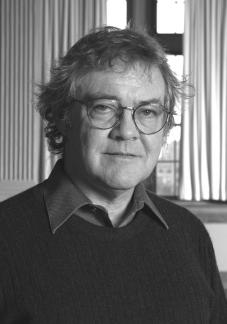Law professor C. Edwin Baker developed the “liberty model” of the First Amendment as an alternative to the model of the “marketplace of ideas,” which the Supreme Court has often cited in its decisions.
Baker rejects ‘marketplace of ideas’ model of First Amendment
Baker (1989) believes that the marketplace model, which he largely traces to John Stuart Mill’s On Liberty, is unpersuasive because it rests on unproven ideas that truth is objective and discoverable, that people are basically rational, and that this rationality would enable individuals to judge such truths (pp. 6–7).
Baker similarly rejects the idea that the First Amendment was primarily designed to protect “political speech”; indeed, he argues that this is simply an attempt to adapt the marketplace of ideas approach to the political arena (p. 28).
Liberty model: Speech and expression should be protected because of value to individual
Baker says that in his liberty model, “Speech or other self expressive conduct is protected not as a means to achieve a collective good but because of its value to the individual” (p. 5). Baker describes his model as embracing the idea “that the First Amendment protects a broad realm of nonviolent, noncoercive, expressive activity” (p. 47).
He believes such nonviolent, noncoercive speech serves two primary values, namely, “self-fulfillment” and “self-realization” (p. 47). Democracies properly promote policies that promote “equal respect for persons as autonomous agents” (p. 49).
Liberty model restrains three types of speech
With such an understanding, it is possible to restrain three distinct types of speech:
- “Speech involved in an actual or attempted taking of, or physical injury to, another’s person or property” (p. 59);
- Speech “not chosen by the speaker and which, therefore, cannot be attributed to the speaker’s manifestation of her substantive values” (p. 59; Baker includes most commercial speech in this category);
- And “speech designed to disrespect and distort the integrity of another’s mental processes or autonomy” (pp. 59–60). This includes such “speech activities such as fraud, perjury, blackmail, espionage, and treason” (p. 60).
With the exception of these three categories of expression, however, Baker’s theory does provide a rationale for the protection of nonviolent symbolic speech (such as wearing arm bands or other political symbols).
Baker says liberty model creates First Amendment coherence
Although Baker does not believe that constitutional literalism or reliance on the intentions of the framers is an adequate method of constitutional interpretation, he maintains that advocates of First Amendment absolutism have often come closer to protecting First Amendment values than have advocates of “balancing.”
Baker believes that his model of free speech gives greater coherence to the First Amendment: “First Amendment protections of speech, assembly, and free exercise of religion are merely different markers bounding a single realm of liberty of self-expression and self-determination” (p. 5).
Baker recognizes special rights for press
Baker points out that Thomas Emerson, a noted First Amendment scholar, treats freedom of the press somewhat differently, defending what he calls “the ‘fourth estate’ theory of the press” that he attributes to Justice Potter Stewart (p. 225).
This theory, which in turn dates back to a comment by the English philosopher Edmund Burke, notes the role of the press as a “Fourth Estate” (balancing the three estates — clergy, nobility, and commoners — represented within Parliament). Baker recognizes special rights for the press that allow it to defend itself. Arguing that his theory “justifies only ‘defensive’ constitutional rights” for the press, he observes that “despite their instrumentalist foundation, [these rights] should generally take an absolute form” (p.225).
John Vile is a professor of political science and dean of the Honors College at Middle Tennessee State University. He is co-editor of the Encyclopedia of the First Amendment. This article was originally published in 2009.

